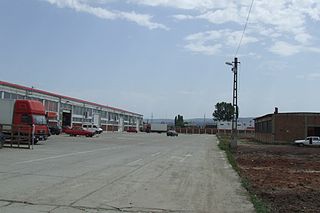Early life and education
This section does not cite any sources .(April 2019) (Learn how and when to remove this template message) |
Kenessey (full name in Hungarian: kenesei Kenessey Albert László; in English: Albert László Kenessey de Kenese) was born on 27 April 1889 in Budapest as the second child, first son of Béla Kenessey and Ilona Vágfalvy. When he was 5 years old his father was appointed rector of the Theological University in the then-Hungarian city of Kolozsvár (after 1918 Cluj in Romania, since 1974 Cluj-Napoca), so the family moved to Transylvania (in 1910 Kenessey's father was to become bishop of Transylvania). In 1900 Kenessey's mother died, and he and his sister were raised by their grandmother, an exceptionally strict and demanding woman.
After gymnasium Albert Kenessey began his study of medicine at the University of Kolozsvár. He wrote his doctoral thesis on animal studies of vascular surgery with Prof. Kálmán Buday as supervisor. On May 2, 1913, he was awarded his doctorate, "sub auspicis regis", under the patronage of the king. This indicated that from the first year of elementary school until the last examination at the university he always received the best possible marks. In recognition of this, the minister of culture and sciences, Béla Jankovics, presented him with a ring showing the letters FJ and a crown set in diamonds on blue enamel and surrounded with diamonds (FJ stood for Franz Joseph, Emperor of Austria and King of Hungary in the Austro-Hungarian monarchy). In connection with this, the young Kenessey was expected to request an audition with the King in order to thank for the ring, a request that was usually granted, but in this case, possibly due to the tense political situation and/or the advanced age of the monarch, the occasion did not materialize, to Kenessey's later regret.
Kenessey had decided to become a surgeon and he started working as assistant-in-training at the surgical clinic of Budapest. When in 1914 the First World War broke out he had to go to the front. He soon earned the Signum Laudis award for bravery but in 1915 he contracted typhoid fever. He was sent home to Kolozsvár where for weeks he fought a life-and-death struggle against the disease in an era without antibiotics. He survived, but barely. He lost half of his weight and developed thrombosis in his right leg, the consequences of which plagued him for the rest of his life. After his recovery he worked for some time in a hospital at the Italian front. After the war he went to Budapest and worked in the Rokus Hospital where he finished his surgical training.
















